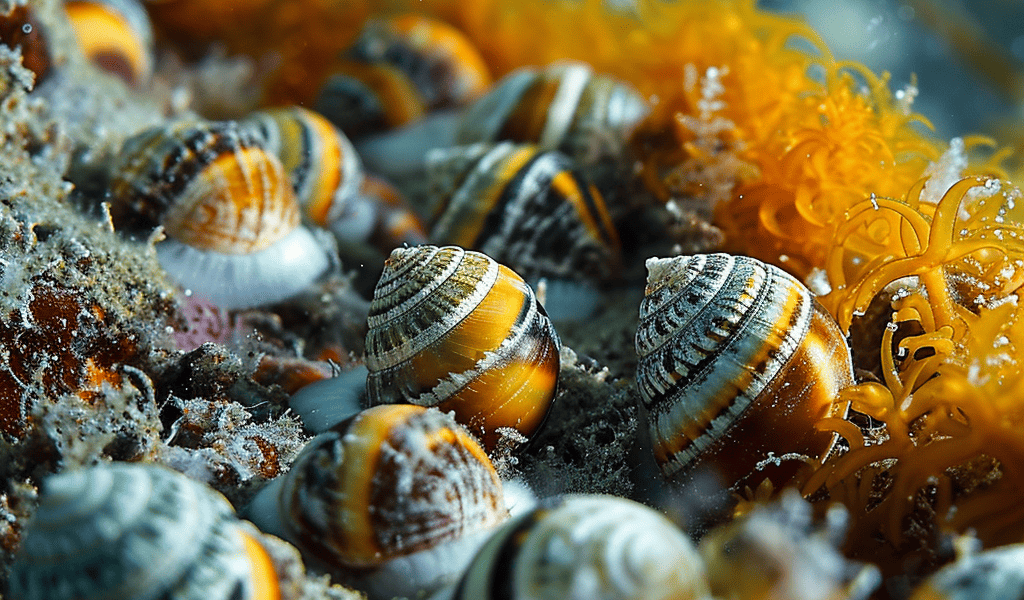A recent study published in the journal Science has shed light on the genetic basis of a transition from egg-laying to live-bearing in marine snails. This transition, which has evolved repeatedly across animals, provides an opportunity to understand the genetic architecture of such innovations.
The study, conducted by Stankowski et al., identified multiple genome regions associated with the transition, demonstrating a polygenic basis of live-bearing reproduction with alleles that accumulated in response to selection over time. The researchers found that individuals do not cluster by reproductive mode in a genome-wide phylogeny, but local genealogical analysis revealed numerous small genomic regions where all live-bearers carry the same core haplotype.
The candidate regions showed evidence for live-bearer–specific positive selection and were enriched for genes that are differentially expressed between egg-laying and live-bearing reproductive systems. The ages of selective sweeps suggest that live-bearer–specific alleles accumulated over more than 200,000 generations, indicating that new functions evolve through the recruitment of many alleles rather than in a single evolutionary step.
This study provides valuable insight into the emergence of complex, transformative traits in populations. The findings contribute to our understanding of how new functions evolve and the genetic mechanisms underlying such evolutionary transitions.
These results offer important implications for the study of biological diversification and the genetic basis of key innovations in the animal kingdom. The research not only enhances our knowledge of the evolutionary paths to new phenotypes but also underscores the significance of polygenic processes in driving the emergence of novel traits.





